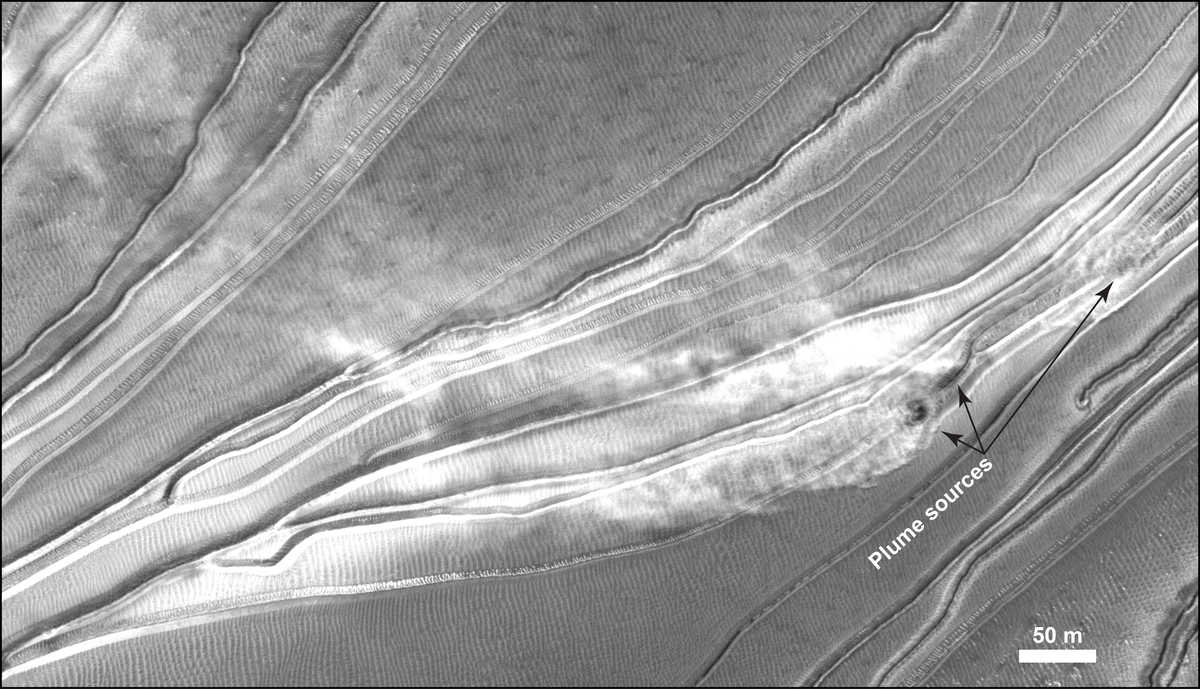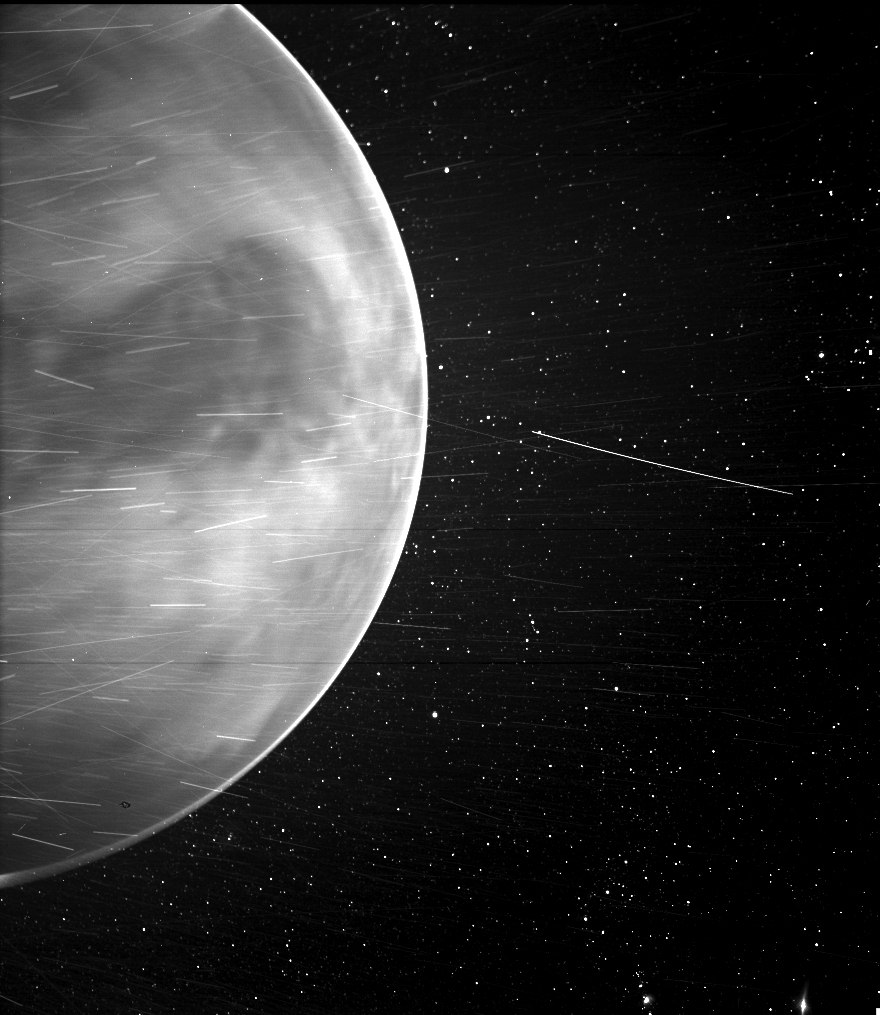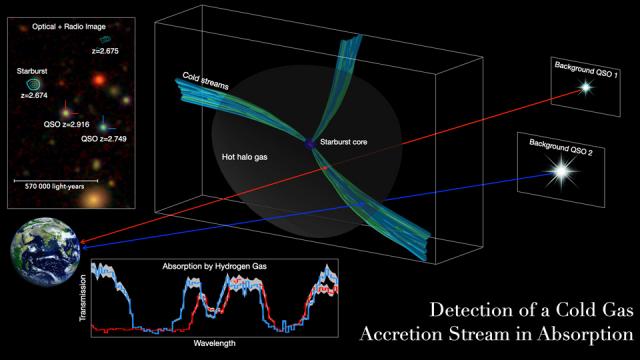We’re going to show just how picturesque science can be. NASA’s Perseverance rover has released a color, 360-degree panorama of its landing site. Like all good phone-camera panoramas, things look pretty distorted in this rectangular view, but this does give us a hint of what’s to come. The camera that took this image, Mastcam-Z, can zoom, record video, and provide wide-angle and panorama shots like this one. We’ll have the link to the original in our show notes so you can zoom in and out yourself and really appreciate the scope of the image.

As awesome as it is to squee at the Martian landscape as Perseverance does its best imitation of Ansel Adams, there is science to discuss, people. There. Is. Science.

Researchers from the Southwest Research Institute have used eleven years of images from the Mars Reconnaissance Orbiter to track the seasonal activity on Martian sand dunes, tracking airborne dust plumes, and the emergence of linear gullies and they think they pieced together what is happening.
In a new paper in Geophysical Research Letters, Cynthia Dinwiddie and Timothy Titus explain that they often find chunks of dry ice at the base of the gullies, and they believe that spring heating can cause some carbon dioxide (CO2) to vent and also break off a chunk of dry ice that will slide down the gully, stirring up the dust plumes and carving the gully as it goes. According to Dinwiddie: For two decades, planetary scientists have had many ideas about how and when very long, narrow gullies formed on frost-affected sand dunes on Mars. Initially, scientists thought linear dune gullies were remnants of an ancient time when the climate on Mars supported liquid water on its surface. Then, repeat imaging showed that changes were happening now when Mars is cold and arid. Several hypotheses have since been proposed, usually involving either CO2 ice or water ice. In this paper, we offer compelling new evidence that venting CO2 gas dislodges CO2 ice blocks that carve and modify linear dune gullies.
And there you have it: Mars may not have flowing water, but it does have sliding ice.

Believe it or not, Mars isn’t the only world with spacecraft. Venus not only has the orbiting Akatsuki mission but it also just got a fly-by from the Parker Solar Probe. This NASA mission uses the gravitational pull of Venus to adjust its orbit as it dives in and out of the Sun’s corona. Back in July, Parker captured this stunning image of the night side of Venus. Yes, the night side. It turns out, the camera they used is more sensitive to infrared light than anyone knew, and they were able to see the glow of warm clouds and the dark sweep of the cool Aphrodite Terra highland region. This was completely unexpected, and quite by accident, this team seems to have found a window through the Venusian atmosphere while just trying to get a picture of its glowing terminator, which they did get — that glow along the edge is the nightglow. Oh and that streak, it’s probably just a cosmic ray hitting the camera in a particularly artistic way.
Not all science gets to be pretty, but that doesn’t mean the results can’t still be awesome. As you may have heard last year, NASA released a set of Moon rocks collected by Apollo astronauts for new analysis. Today, we have new results from these old rocks.
In a paper published in Science Advances, Alberto Sall and Erik Hauri discuss the molecules found trapped in lunar volcanic glasses from the Apollo 15 and 17 missions. According to the release: This new study looked at 67 individual volcanic glass samples and their melt inclusions — tiny blobs of molten lava trapped within crystals inside the glass. Melt inclusions capture the lava before sulfur and other volatile elements are released as gas during eruption.
They found a variety of different ratios of sulfur isotopes, which implies different lava flows came from different reservoirs within the Moon. By understanding the history of the lava flows, we can now start to understand the history of the Moon’s interior too. There are still more samples to analyze, and we hope there will be more samples returned by future missions. This research is just beginning and we look forward to future results.

From planets and moons, we now jump wildly to the beginning of the universe. One of the more confusing things we’ve had to try and figure out in recent years is how massive galaxies with supermassive black holes were able to rapidly form close to the beginning time. The universe was pretty hot back then, and hot material tends to be fast-moving and not particularly likely to collapse down into stuff like galaxies and stars. A couple of decades ago it was theorized that cosmic filaments – cold channels through the chaos – could pour material into forming galaxies. While the theory made sense, no theory is to be believed until we have observational evidence, and now we have that evidence.
In a new paper in The Astrophysical Journal with lead author Hai Fu, researchers present observational evidence from ALMA of cold filaments channeling material into a massive galaxy. According to Fu: Based on our observations, such streams can fill up the reservoir in about a billion years, which is far shorter than the amount of time that was available to the galaxy at the epoch that we were observing.
These observations were only possible because there are two even more distant quasars shining light through the forming galaxy. Basically, we got lucky; from our perspective three massive galaxies formed in the same patch of sky within the first 2.5 billion years of the universe, and the two more distant galaxies allow us to see cold filaments in the nearer system. As Fu says: So, I feel extremely fortunate that nature provided us this opportunity to detect this major artery leading to the heart of a phenomenal galaxy during its adolescence.
More Information
Scientist Finds Evidence of Seasonal Activity on Martian Sand Dune
- SwRI press release
- “Airborne Dust Plumes Lofted by Dislodged Ice Blocks at Russell Crater, Mars,” Cynthia L. Dinwiddie and Timothy N. Titus, 2021 February 24, Geophysical Research Letters
Parker Solar Probe Captures Stunning View of Venus
- NASA press release
Newly Released Apollo Moon Rock Samples Provide Composition Clues
- Brown University press release
- “Large sulfur isotope fractionation in lunar volcanic glasses reveals the magmatic differentiation and degassing of the Moon,” Alberto E. Saal and Erik H. Hauri, 2021 February 24, Science Advances
Cold Gas Pipelines Feed Early, Massive Galaxies
- University of Iowa press release
- “A Long Stream of Metal-poor Cool Gas around a Massive Starburst Galaxy at z = 2.67,” Hai Fu et al., 2021 February 24, The Astrophysical Journal




 Join the Crew!
Join the Crew!
 Escape Velocity Space News
Escape Velocity Space News
0 Comments